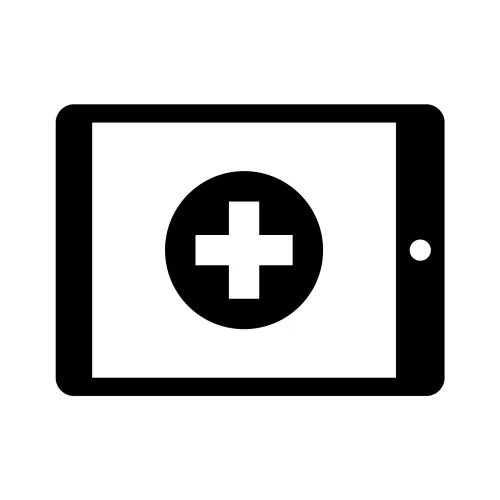ED Coding and Reimbursement Alert
Can You Select the Right Dx Code for These Emergent Conditions?
Your ED may see these diagnoses frequently, but do you know how to report them? Every ED is sure to see patients with acute myocardial infarctions, fractures and hypertensive crises this year, but coding these conditions can present myriad challenges. Not only does ICD-10 present a wide range of options, but physicians don't always document as much specificity as they should. Read on and determine whether you have the coding knowledge to report the most appropriate diagnoses in these five cases. Question 1: Which section of ICD-10 applies for a hypertensive crisis? Answer 1: To report a documented hypertensive urgency, hypertensive emergency, or unspecified hypertensive crisis, turn to the appropriate code from category I16- (Hypertensive crisis). You should also code any identified hypertensive disease from categories I10- through I15-, per the guidelines. The sequencing of these codes is based on the reason for the encounter unless the ICD-10 coding direction states differently. Expert definition: Hypertensive crisis involves a blood pressure increase so severe that it may result in a stroke, says Kelly D. Dennis, MBA, ACS-AN, CANPC, CHCA, CPC, CPC-I, owner of Perfect Office Solutions in Leesburg, Florida. Hypertensive crisis can be classified as either urgent or emergency. Citing information from the Mayo Clinic, Dennis explains that a patient experiencing urgent hypertensive crisis has extremely high blood pressure, but the patient's condition doesn't indicate organ damage. In contrast, emergency hypertensive crisis involves extremely high blood pressure that has resulted in internal organ damage that may lead to life-threatening complications. Question 2: Which code should I report for an unspecified acute myocardial infarction (AMI)? Answer 2: The 2018 ICD-10 code for unspecified AMI is I21.9 (Acute myocardial infarction, unspecified). Acknowledging this addition, the 2018 ICD-10 Guidelines state, "Code I21.9 (Acute myocardial infarction, unspecified) is the default for unspecified acute myocardial infarction or unspecified type. If only type 1 STEMI or transmural MI without the site is documented, assign code I21.3 (ST elevation [STEMI] myocardial infarction of unspecified site)." Takeaway: Before the addition of I21.9, you would have reported I21.3 as the default for unspecified AMI. "Breaking out unspecified AMI as a separate code is a move towards the greater specificity that underlies the importance of the change to ICD-10," says Chris Zimmerer, CPC, CCC, Central Billing Office Coder at LifePoint Health in Georgetown, Kentucky. Providers will need to be as accurate as possible in documenting site and type of MI, whenever possible, to avoid denials or returned claims, Zimmerer adds. Question 3: A patient presents with a pressure ulcer of the foot. Which ICD-10 code applies to this? Answer 3: You now have 45 new non-pressure chronic ulcer code options to choose from, and you must know key facts such as whether necrosis or other severity is involved to select the right code. Caution: As with the previous non-pressure chronic ulcer codes, you must first code any associated underlying condition like associated gangrene (I96) or diabetic ulcers (E08.621, E08.622, E09.621, E09.622, E10.621, E10.622, E11.621, E11.622, E13.621, E13.622), then you would add the appropriate chronic ulcer code to your claim form. You may be familiar with the current ICD-10 codes using the wording "non-pressure chronic ulcer with necrosis of muscle." The new codes add options for non-pressure chronic ulcers without evidence of necrosis. The new code choices are: You'll follow a similar code pattern for the right ankle (L97.315-L97.318) and left ankle (L97.325-L97.328). ICD-10-CM's "without necrosis" additions don't stop with the ankle. You'll also find similarly appointed codes for the unspecified, right, left sides of: Necrosis defined: Necrosis refers to how healthy the wound is, according to Jordan Meyers, DPM, partner at Raleigh Foot and Ankle Center and consultant at Treace Medical Concepts, Inc. in Raleigh, North Carolina. Necrosis is a sign that there is likely inadequate perfusion to the wound (vascular issue), Meyers says. Important: Watch out for the key descriptor terms "with bone involvement" versus "with muscle involvement." This distinction helps define the depth of the wound and how much treatment may be involved, according to Meyers. The deeper the wound, the deeper the problem and the higher risk of infection or need for surgery. "Bone doesn't like to be exposed to air, so you have a higher chance of getting osteomyelitis in those wounds," Meyers adds. Question 4: The physician documents a patient in "respiratory distress." Which code applies? Answer 4: Initial encounters with patients suffering from respiratory distress don't always conclude with an authoritative diagnosis, which means you will often end up bypassing the J00-J99 (Diseases of the Respiratory System) codes in favor of choosing a sign or symptom from the R00-R09 (Symptoms and signs involving the circulatory and respiratory systems) code block. But be careful when you do, as some symptom and sign codes that look like respiratory conditions may not be so. For example, Chelle Johnson, CPMA, CPC, CPCO, CPPM, CEMC, AAPC fellow and billing/credentialing/auditing/coding coordinator at County of Stanislaus Health Services Agency in Modesto, California, points out, "You would only use R07.0 (Pain in throat) if the pain could not be identified as a disease relating to the respiratory system." Otherwise, you would use a more specific diagnosis, such as J31.2 (Chronic pharyngitis) or J02.9 (Acute pharyngitis, unspecified). Similarly, Johnson maintains, you would only use R06.2 (Wheezing) "if any of the respiratory system disease codes such as J44- (Other chronic obstructive pulmonary disease), J45- (Asthma), or any of the J40-J42 bronchitis codes are notwarranted." Question 5: A patient presents with sinus pain and the doctor determines she has "acute ethmoidal sinusitis and/or ethmoidal sinonasal polyposis." Which code applies? Answer 5: Confusion with a set of diagnoses such as these is understandable based on the ambiguity of a definitive diagnosis. While a coder may feel inclined to send the report back to the provider for clarity, the ICD-10-CM Guidelines explain what you should do when this coding scenario arises. According to Section II, part D, "In those rare instances when two or more contrasting or comparative diagnoses are documented as 'either/or' (or similar terminology), they are coded as if the diagnoses were confirmed and the diagnoses are sequenced according to the circumstances of the admission. If no further determination can be made as to which diagnosis should be principal, either diagnosis may be sequenced first." Based on this explanation, you can consider the phrasing of "and/or" to be synonymous with "either/or" and therefore make the determination that you should code both diagnoses. Since there is no further elaboration as to the sequencing of the diagnoses, the determination of primary versus secondary diagnosis can be left up to your discretion. You will apply codes J01.20 (Acute ethmoidal sinusitis, unspecified) and J33.8 (Other polyp of sinus) in whichever order you'd like.
Related Articles
ED Coding and Reimbursement Alert
- Benchmarking:
How Would Your 99285 Coding Stand up in An Audit?
Plus: Find out which states had the highest and lowest percentage of high-level ED claims. [...] - Is Your State Among the Biggest Billers of 99285?
Although the average percentage of services billed with 99285 in the US was 55 percent [...] - ICD-10 Quiz:
Can You Select the Right Dx Code for These Emergent Conditions?
Your ED may see these diagnoses frequently, but do you know how to report them? [...] - Patient Privacy:
Determine Whether New HIPAA Update Impacts Your Rights to Discuss Patients' Opioid Issues
Do you know who you can share this information with? As emergency department providers struggle [...] - You Be the Coder:
Know What Constitutes An 'Inducement"
Question: We keep hearing that we should be more careful about which cases to bill [...] - Reader Question:
Evaluate Coding Options for Consults Outside the ED
Question: A hospital attending physician needed our ED physician's opinion on an inpatient's condition, so [...] - Reader Question:
Do All Burns Require Burn Codes?
Question: A patient reported to the ED with her shoulders painfully burned after spending a [...] - Reader Question:
Differentiate Viral Pinkeye From Allergic
Question: We saw a patient with pinkeye related to a specific virus, and we've never [...]




